Canon 18-200 vs Sigma 18-250 vs Tamron 18-250 and 18-270
Canon 18-200, Tamron 18-250, Tamron 18-270, Sigma 18-250. Click here to enlarge.
Superzoom are popular lenses between amateur photographers: they are extremely versatile, and they allow to take almost every kind of photo with a single lens. They are relatively small and light, and not too expensive. But are they good? Or the compromised made to create a 11-15x zoom at a low price gives unacceptable image quality? I have tested the latest superzooms from Canon, Sigma and Tamron to aswer to this question...
Specifications
����| � | � �Canon 18-200 IS | � �Sigma 18-250 OS | � �Tamron 18-250 | � �Tamron 18-270 VC |
�
| �Focal length | � �18-200 mm | � �18-250 mm | � �18-250 mm | � �18-270 mm |
�
| �Real Focal length | � �18-190 mm | � �18-220 mm | � �18-220 mm | � �18-230 mm |
�
| �Macro ratio | � �0.25x (1:4.0) | � �0.30x (1:3.4) | � �0.29x (1:3.5) | � �0.29x (1:3.5) |
�
| �Max Aperture | � �f/3.5-5.6 | � �f/3.5-6.3 | � �f/3.5-6.3 | � �f/3.5-6.3 |
�
| �Stabilization | � �Yes | � �Yes | � �No | � �Yes |
�
| �Autofocus | � �Lens motor (no USM) | � �Lens motor (no USM) | � �Lens motor (no USM) | � �Lens motor (no USM) |
�
| �Closest Focus | � �0.45 meters | � �0.45 meters | � �0.45 meters | � �0.49 meters |
�
| �Dimensions | � �79 x 102 mm | � �79 x 101 mm | � �74 x 84 mm | � �80 x 101 mm |
�
| �Weight | � �600 g | � �630 g | � �430 g | � �560 g |
�
| �Weather sealing | � �No | � �No | � �No | � �No |
�
| �Price | � �$ 600 | � �$ 530 | � �$ 450 | � �$ 630 |
�
| �Announced | � �2008 | � �2009 | � �2006 | � �2008� |
�
(note: I have listed the real focal lenght because often the real zoom range is less than declared. The real FL number is an estimate based on my tests).
Built quality, stabilization and autofocus
The built quality is similar for all the four lenses; the Tamron 18-250 gives a slightly more "cheap" feeling, but it is due mainly to its lighter weight. The Tamron 18-250 is also the most compact of the four, while the other three are clearly bigger and heavier. They extend a lot during zooming. The zoom ring is large, but the zooming is not "fluid" in any of these lenses - the Canon 18-200 and the Tamron 18-250 are slightly better in this respect, but none is great. The Sigma and the Tamron are supplied with a lens hood, while the Canon comes without hood (if you want it, it cost about $25).

Canon 18-200, Tamron 18-250, Tamron 18-270, Sigma 18-250. Full extension; all lenses are shown with hood except the Canon 18-200 IS (Canon does not provide any hood with the lens!). Click here to enlarge.
The autofocus is about the same: the Canon is slightly faster, but there is not a big difference. All lenses have "old style" AF motors, they don't have ultrasonic motors. Even the Sigma, that is labelled as "HSM", actually is not HSM at all - it uses the so called "micro-HSM", that has none of the advantages of the true HSM motor. Canon was the first manufacturer to use this kind of misleading labeling, calling "USM" even lenses that use the crappy micro-USM motor, and sadly Nikon and Sigma have followed this trend...
The image stabilization of these lenses allows to compensate about 2-3 stops of shake (Canon and Sigma declares 4 stops, but that's a bit optimist). Stabilization is an huge help on these lenses, and I really miss it in the Tamron 18-250; of course if you have a camera with sensor stabilization you no longer need lens stabilization.
Image quality comparison (studio test)
I have tested the lenses on my Canon 500D (15 megapixel, APS-C). The lenses was mounted on tripod; I have used mirror lock up and self timer. The following images are 100% crop from the center of the unprocessed RAW file. (note: "sig" is Sigma 18-250, "can" is Canon 18-200, "t25" is Tamron 18-250 and "t27" is the Tamron 18-270).
18mm, center:
����| � | � �wide open | � �f/8 |
�
| �sig | � � | � � |
�
| �can | � � | � � |
�
| �t25 | � � | � � |
�
| �t27 | � � | � � | �
�
18mm, corner:
����| � | � �wide open | � �f/8 |
�
| �sig | � � | � � |
�
| �can | � � | � � |
�
| �t25 | � � | � � |
�
| �t27 | � � | � � | �
�
At 18mm, all four lenses are essentially identical: very good in the center, a bit soft (but not bad for a superzoom) in the corners. The Tamrom 18-270 is slightly worse than the others in the corners, but it is a minor difference. All four lenses shows some chromatic aberration (a problem very common with extreme zooms).
50mm, center:
����| � | � �wide open | � �f/8 |
�
| �sig | � � | � � |
�
| �can | � � | � � |
�
| �t25 | � � | � � |
�
| �t27 | � � | � � | �
�
50mm, corner:
����| � | � �wide open | � �f/8 |
�
| �sig | � � | � � |
�
| �can | � � | � � |
�
| �t25 | � �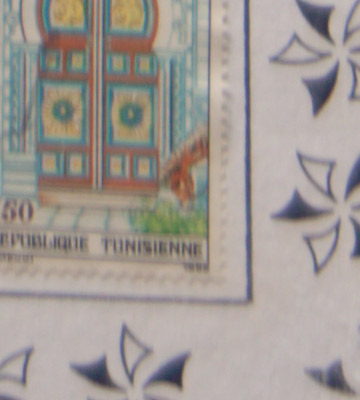 | � � |
�
| �t27 | � �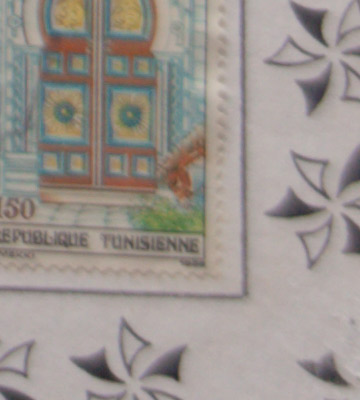 | � � | �
�
At 50mm, the situation is similar: all lenses are about on par; they are sharp in the center, and clearly soft in the corners. The Tamron 18-250 and the Sigma are slightly better in the corners, when stopped down, but it is a small difference. At this focal lenght the chromatic aberration is almost inexistent.
200mm, center:
����| � | � �wide open | � �f/8 |
�
| �sig | � � | � � |
�
| �can | � � | � � |
�
| �t25 | � � | � � |
�
| �t27 | � � | � � | �
�
200mm, corner:
����| � | � �wide open | � �f/8 |
�
| �sig | � � | � �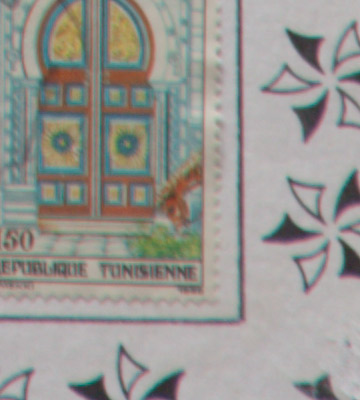 |
�
| �can | � �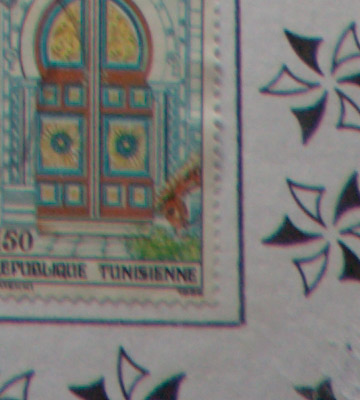 | � � |
�
| �t25 | � � | � � |
�
| �t27 | � � | � � | �
�
At 200mm, there are big differences. In the center, the Canon is still quite sharp; the Tamron 18-250 comes close, while the Sigma and the Tamron 18-270 are a bit softer. In the corners, the Canon is way better than the other three, that are much softer at every aperture.
250/270mm, center:
����| � | � �wide open | � �f/8 |
�
| �sig | � � | � � |
�
| �t25 | � � | � � |
�
| �t27 | � � | � � | �
�
250/270mm, corner:
����| � | � �wide open | � �f/8 |
�
| �sig | � � | � � |
�
| �t25 | � � | � � |
�
| �t27 | � � | � � | �
�
The Sigma and the two Tamrons allows to reach 250 and 270mm. At the extreme focal lenght, the three lenses give similar results: they are ok in the center (not super sharp, but usable) and poor in the corners.
Distant subject, real FL and image quality
In this test, I have photograped a distant subject from the same position. I have added to the comparison the Canon 180mm Macro with 1.4x, that gives a true 250mm, to verify the real focal lenght of the zooms.
����| �Sigma 18-250 | � �Tamron 18-250 |
�
� | � � | �
�
����| �Tamron 18-270 | � �Canon 18-200 |
�
� | � � | �
�
����| �Canon 180mm + 1.4x (250mm) |
�
� | �
�
The results are interesting. The Canon 180+1.4x (250mm) gives more magnification than all the zooms, included the 18-270. I'd estimate that the 18-270 actually reaches about 230mm; the Sigma 18-250 and the Tamron 18-250 actually reach about 220mm, while the Canon 18-200 should be close to 190mm or so.
What about the image quality? these are some 100% crops from the center. The photos are all taken wide open (f/5.6 or f/6.3).
����| �Sigma 18-250 |
�
� | �
�
����| �Tamron 18-250 |
�
� | �
�
����| �Tamron 18-270 |
�
� | �
�
����| �Canon 18-200 (interpolated to 250mm equiv.) |
�
� | �
�
����| �Canon 18-200 |
�
� | �
�
����| �Canon 180 Macro with 1.4x TC, at f/6.3 |
�
� | �
�
At the longest focal, the Canon 18-200 is the winner between superzooms: it shows more contrast and sharpness. It has less magnification, but surprisingly, even interpolating it to the equivalent of 250mm, it gives about the same detail of the other lenses, and more contrast. Needless to say, the Canon 180mm + 1.4x is another world - but this is not a fair comparison ;-)
Wide angle: how wide are actually these lenses at 18mm?
After watching the results of previous test, I wondered if they were actually 18mm at their shortest FL. I have taken four photos from the same point of view, and I have added the Sigma 20mm f/1.8 as comparison.
����| �Sigma 18-250 | � �Tamron 18-250 |
�
� | � � | �
�
����| �Tamron 18-270 | � �Canon 18-200 |
�
� | � � | �
�
����| �Sigma 20mm |
�
� | �
�
This time, all lenses show clearly a wider angle of view than the 20mm: they are true 18mm.
Macro capabilities
On paper, the four lenses give similar macro results...in practice, they are very different. These are four photos taken at the minimum focussing distance, using the longest FL of every lens:
����| �Sigma 18-250 | � �Tamron 18-250 |
�
� | � � | �
�
����| �Tamron 18-270 | � �Canon 18-200 |
�
�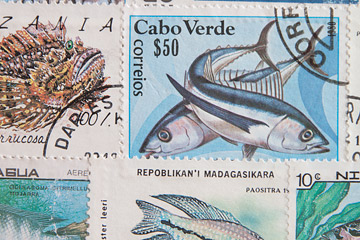 | � � | �
�
The Canon 18-200 and the Tamron 18-250 are about on par, while the Tamron 18-270 gives a little more magnification, and the Sigma 18-250 is even better. Sigma seems the winner, but when we look at image quality, the situation is different.
Center crops:
����| �Sigma 18-250 | � �Tamron 18-250 |
�
� | � � | �
�
����| �Tamron 18-270 | � �Canon 18-200 |
�
�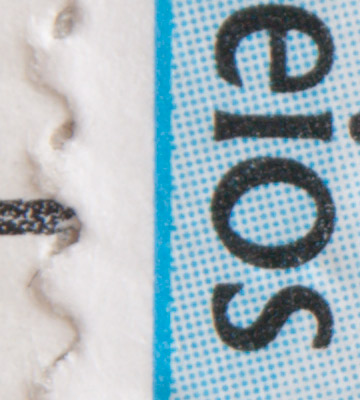 | � � | �
�
corner:
����| �Sigma 18-250 | � �Tamron 18-250 |
�
� | � � | �
�
����| �Tamron 18-270 | � �Canon 18-200 |
�
� | � � | �
�
The Sigma, Canon and Tamron 18-250 are quite poor at the maximum macro ratio. Surprisingly, the Tamron 18-270 is much better than the others for macro - it is a bit sharper in the corners and a lot sharper in the center.
Resistance to flare
In this test, I have compared the resistance to flare of the four lenses. I have added to the comparison the Canon 24-105, that is my worst lens in terms of flare. (note: "c18" is Canon 18-200, "sig" is Sigma 18-250, "t25" is Tamron 18-250, "t27" is the Tamron 18-270, c24 is the Canon 24-105).
����| � | � �wide open | � �f/11 |
�
| �c18 | � � | � � |
�
| �sig | � � | � � |
�
| �t25 | � � | � � |
�
| �t27 | � � | � � |
�
| �c24 | � � | � � | �
�
The Canon 18-200 and the Tamron 18-270 show a little less flare than the other two superzooms; all four superzooms are better than the Canon 24-105 L, in terms of flare.
Conclusions
If I had to choose between these four superzooms, I'd go for the Canon. At the shorter focal lenght they are all about the same, but the Canon has a clear advantage at the longest FL, in spite of the slightly shorter reach. If you are looking for a super small and versatile lens for your trips or holidays, the Canon 18-200 may be the lens for you, if you can accept the limits of a superzoom (not very bright, chromatic aberration, distortion, not as sharp as more limited zooms).
The Sigma and the Tamrons are about on par; the Tamron 18-250 is the best of the three, in terms of optical quality at "normal" distances, while the Tamron 18-270 is the best for macro work (even though all them are way worse than a real macro lens).

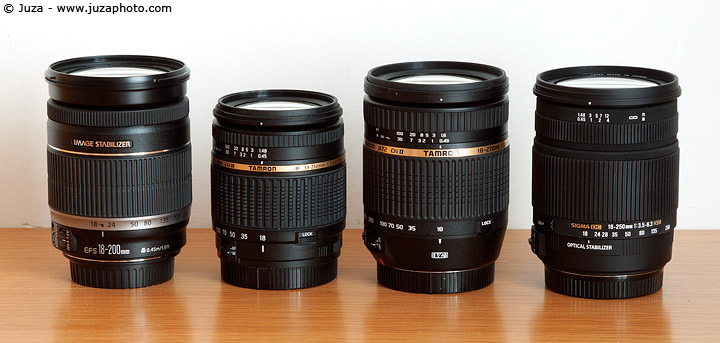



































































































 JuzaPhoto contains affiliate links from Amazon and Ebay and JuzaPhoto earn a commission in case of purchase through affiliate links.
JuzaPhoto contains affiliate links from Amazon and Ebay and JuzaPhoto earn a commission in case of purchase through affiliate links.